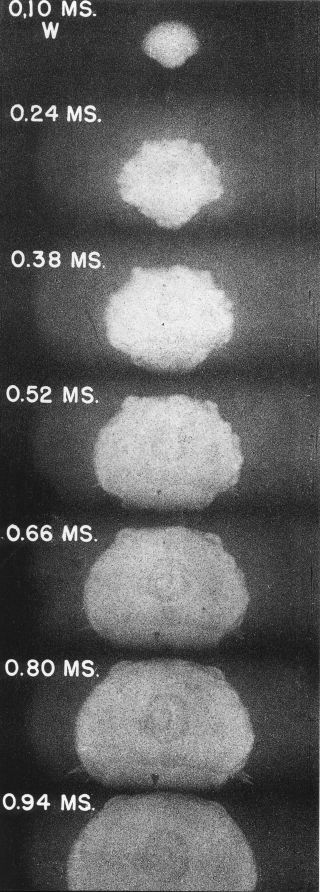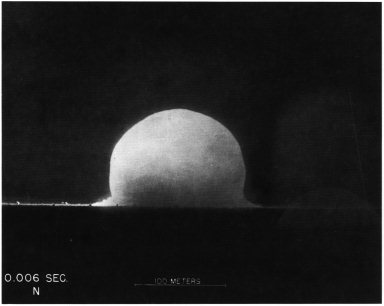Regarding the whole 'there is no way to establish the damage within the necessary timeframe to retarget' I feel the need to point out that nuclear explosions (as they stand with current, real nuclear bombs) will propagate a fireball on the order of hundreds microseconds to milliseconds.
Here you can see from the trinity test a fireball is already propogating from 100 to 940 microseconds (no scale due to poor resolution of the images):

And by 6 milliseconds it has already exceeded 100 meters in diameter:

You could reasonably argue that it would take longer than that to achieve penetration against dense armor, and I for one would not overtly disagree with that, it seems to me the situation would allow you to push the numbers in any direction you so choose (either in favor of same-salvo missile retargeting or against it), however the point stands that its not necessarily ridiculous that you would be able to tell if the target was dead or not over the course of milliseconds.
Additionally, a millisecond is potentially plenty of time for a computer to make decisions, I can write code that you could run on your home computer to prove this to any of you if you so desire (let alone application-specific computers designed for the job). It would not be insanity to say that a missile salvo could be spread milliseconds apart (one millisecond corresponds with about 300km at light speed which is below the resolution of the game), and assuming instantaneous/accurate sensor information from the fancy TN FTL sensors (which you could argue is not available, if you want to instead say that this is impossible for gameplay reasons), missiles could then make certain decisions about the likelihood of the destruction of the target.
On this general basis, I would say that the absolute most optimistic case in favor of retargeting missiles, assuming they are travelling at the speed of light, would require at least 1800km of separation between individual missiles (which does fit into the games resolution and would be technically noticeable) if we consider the 6ms timeframe as a baseline for detection of the destruction of the target (which is admittedly a completely bastardized comparison).
It would require accurate sensor information regarding whether certain portions of the ship had been reduced to plasma, which could (obviously) be freely said to be available or unavailable depending on the preference of the developer as to how Steve thinks this should all work. As an alternate mode of detecting the destruction of the target, per earlier posts mentioning the lore snippet of how wreckage is detected instantly, it could be said that an effectively-destroyed ship instantaneously translates into real space as wreckage and the detection of that fact provides the missile's computer with the criteria it needs to decide whether to abort its attack or not.
In other words I am saying I reject the notion that 'there is no way to determine if the target is destroyed or not in that timeframe' because assuming instantaneous intel as to the status of the target (whether we are detecting severe phase changes to the internal volume, or simply detecting its translation into real space via our magical FTL TN sensors) its perfectly possible to
potentially gather that information and then make decisions based off of it in a very expedient manner and
potentially for both the bombs and the computers involved to meet the timing requirements posed.